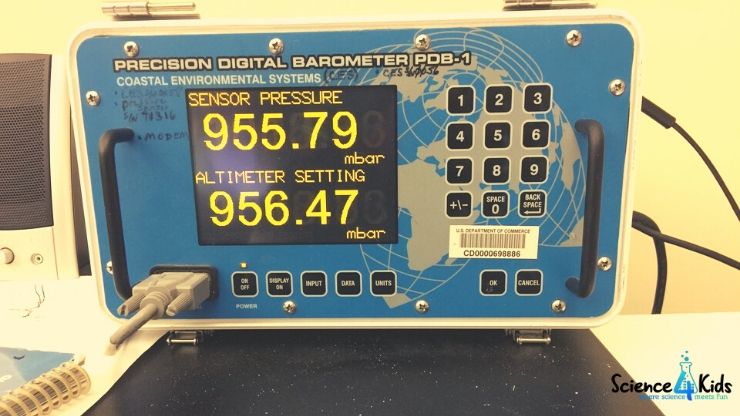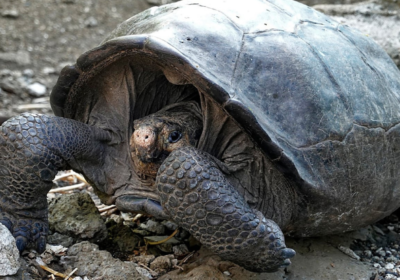Do you know that the air around us is constantly exerting pressure on our bodies? We are so used to it right from our birth that we don’t feel the pressure of air. We can measure this atmospheric pressure with the help of a device called a barometer. It shows whether the air pressure is high or low. These measures are in turn used for making short-term weather predictions. Today, let us make our own barometer and make some weather predictions. This balloon barometer science project will give you a hands-on experience of weather predictions.
What we need
Balloon – 1
Jar with wide base and narrow mouth – 1
Scissors – 1
Rubber band – 1
Thin wooden skewer – 1
Sticking tape – 1
White paper – 1
Marker – 1

Procedure
- Cut a portion out of the balloon using the scissors.
- Take the film of balloon and spread it over the mouth of the jar so as to cover the mouth entirely.
- Tie the rubber band over the mouth of the jar so that the balloon film remains intact.
- Place the wooden skewer over the jar in such a way that the pointed edge of the skewer protrudes out from the top of the jar.
- Stick the skewer to the balloon film using the tape.
- Use the marker to make a few vertical lines in the white paper. Mark the uppermost line as high pressure and the lowest line as low pressure.
- Stick the paper to a wall and keep the jar just in front of it. The skewer should be pointing to the lines in the paper.
- Keep the balloon-covered jar for two to three days. Observe it daily. Note whether the skewer end is moving up or down. Make your weather predictions accordingly.
Explanation
So we saw how to make a simple barometer to measure air pressure. How can we actually ascertain air pressure with our device? When we tied the balloon film over the mouth of the jar, some air got trapped inside. As it is tightly closed, the volume of air inside does not change.
When the air pressure outside the jar is more than the air pressure inside, the air from outside pushes down the balloon film. The skewer too gets pushed down, which means that the open end of the skewer will point upwards. So if the skewer is pointing up, it is an indication of high air pressure.
In the same manner, when the air pressure outside the jar is less than the air pressure inside, the air inside pushes the balloon film upwards. This will push the skewer too, and the other end of it will point downwards. This means that the air pressure is low if skewer points down.
There is a connection between weather and air pressure. A high pressure indicates clear weather whereas a low pressure is an indication of rainy weather. Why is it so? When the air pressure is high, the air gets pushed down to lower levels of atmosphere where the temperature is high. As the air becomes warm, the water droplets in it will evaporate. This causes clear weather.
When the air pressure is low, the air rises up. As altitude increases, temperature reduces and the air cools down. Water droplets in the air condenses and forms rain clouds. Consequently, when there is low pressure, the weather tends to be rough and rainy.
So this was a live demonstration of weather predictions with the help of balloon barometer science project. If you found this interesting, you can check for more in our Projects section.
Here’s Something You Might Like
As a participant in the Amazon Associates Program, Science4Kids may earn from qualifying purchases.




